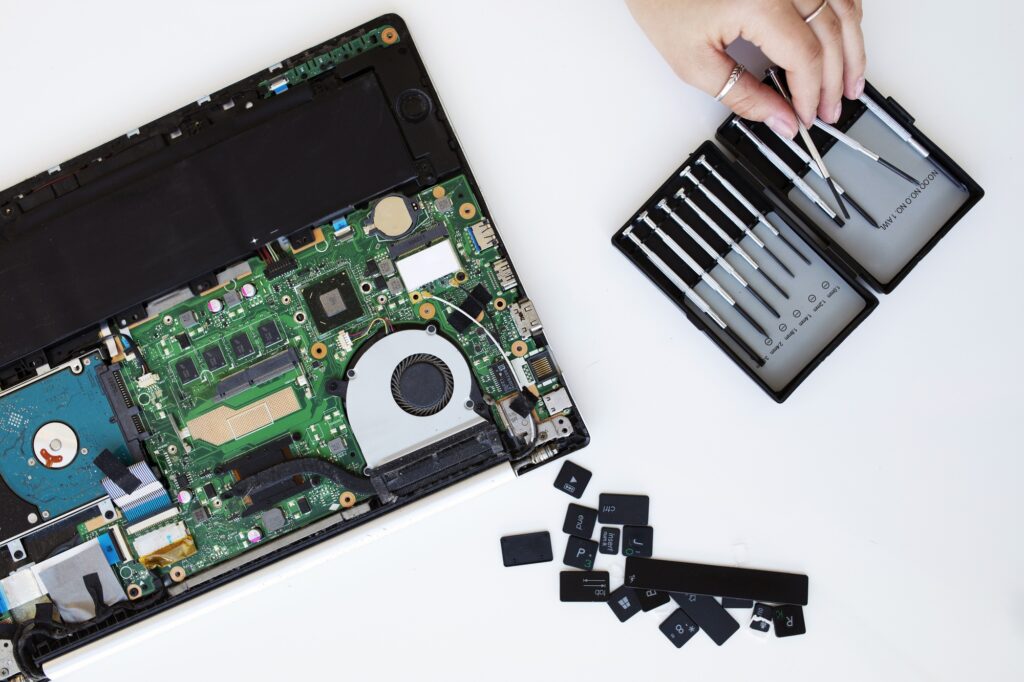Experiencing a broken laptop screen can be incredibly frustrating, especially when it hinders your productivity or interrupts your day-to-day activities. Whether your screen is cracked, flickering, or completely unresponsive, finding a reliable repair solution is essential. This guide aims to provide you with a detailed understanding of laptop screen repair options in Phoenix, addressing common issues, repair processes, and preventive measures to avoid future damage.

Common Causes of Laptop Screen Damage
Understanding what leads to screen damage can help you take better care of your laptop in the future. Here are some of the most common causes:
- Accidental Drops: A sudden drop can crack the screen or damage the internal display components.
- Excessive Pressure: Closing the laptop lid with objects like pens or headphones on the keyboard can cause cracks or damage.
- Liquid Spills: Moisture can seep into the screen or motherboard, causing display malfunctions.
- Age and Wear: Over time, the screen components may degrade, leading to issues like flickering or unresponsiveness.
- Manufacturing Defects: Occasionally, defective components result in premature failure.
Types of Laptop Screen Damage
Not all screen damage is the same. Here are the most common types:
- Cracked Screens: Visible cracks or shattered glass.
- Dead Pixels: Tiny black or white dots that don’t display correctly.
- Flickering Screens: Intermittent brightness or instability in the display.
- Backlight Issues: Dim or uneven lighting due to backlight failure.
- Unresponsive Screens: A blank screen despite the laptop being powered on.
DIY Troubleshooting Steps
Before heading to a professional repair service, you can attempt these basic troubleshooting steps:
- Inspect External Connections: Ensure external cables and peripherals aren’t causing the issue.
- Reboot the Laptop: A simple restart can sometimes resolve display issues.
- Connect to an External Monitor: If the external monitor works fine, the issue is likely with your laptop’s screen rather than internal components.
- Check Graphics Drivers: Outdated or faulty drivers can cause display problems. Update them to rule out software issues.
- Run a Hardware Diagnostic: Use built-in diagnostic tools to detect hardware faults.
If these steps don’t resolve the issue, it’s time to consult a professional repair service.
Laptop Screen Repair Services in Phoenix
Phoenix offers numerous trusted repair centers for laptop screens. Here are some factors to consider when choosing a repair service:
- Experience and Expertise: Look for shops with certified technicians who specialize in laptop repairs.
- Warranty on Repairs: A warranty ensures peace of mind and quality assurance.
- Turnaround Time: Find a service that offers fast repairs to minimize downtime.
- Cost Transparency: Choose providers with upfront pricing and no hidden fees.
Estimated Repair Costs
The cost of repairing a laptop screen can vary based on factors like the model, screen size, and type of damage:
| Type of Repair | Estimated Cost |
|---|---|
| Basic Screen Replacement | $100 – $200 |
| High-End Screen Replacement (e.g., 4K or touchscreen) | $300 – $600 |
| Backlight Repair | $80 – $150 |
| Dead Pixel Fix | $50 – $100 |
Why Professional Repair is Better Than DIY
While there are DIY repair kits available online, professional repair services have several advantages:
- Expertise: Certified technicians ensure accurate diagnosis and repair.
- Tools and Parts: Professionals use high-quality tools and genuine parts.
- Risk Reduction: Improper DIY repairs can worsen the damage.
- Warranty: Repairs often come with warranties, giving you confidence in the quality.

Preventive Measures to Avoid Screen Damage
Taking preventive measures can prolong the life of your laptop screen:
- Invest in a Protective Case: A sturdy laptop case can protect against accidental drops and pressure.
- Avoid Clutter on the Keyboard: Ensure nothing is left on the keyboard before closing the lid.
- Clean Regularly: Use a microfiber cloth to clean the screen gently, avoiding harsh chemicals.
- Handle with Care: Always open and close your laptop lid gently and store it securely.
- Use Screen Protectors: These help prevent scratches and reduce the impact of minor bumps.
Steps to Take After a Screen Breaks
Here’s a quick checklist if your laptop screen is damaged:
- Back Up Your Data: Connect an external monitor if possible and back up important files immediately.
- Assess the Damage: Determine whether the issue is physical damage or internal malfunction.
- Contact a Repair Service: Research and choose a reputable repair center in Phoenix.
- Avoid Further Use: Using a damaged screen can exacerbate the problem and lead to additional costs.
Conclusion
A broken laptop screen doesn’t have to disrupt your life. By understanding the repair process, knowing when to seek professional help, and taking steps to prevent future damage, you can keep your laptop functioning optimally for years to come. Phoenix offers a variety of skilled repair services that can restore your device quickly and efficiently. Don’t let a damaged screen hold you back—reach out to a trusted repair center today.

